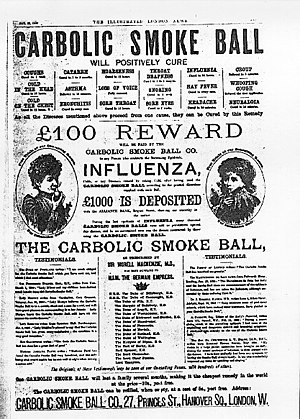- RT @Dave_Champion Obama asks DOJ to look at whether AZ immigration law is constitutional. Odd that he never did that with #Healthcare #tcot #
- RT @wilw: You know, kids, when I was your age, the internet was 80 columns wide and built entirely out of text. #
- RT @BudgetsAreSexy: RT @FinanciallyPoor "The real measure of your wealth is how much you'd be worth if you lost all your money." ~ Unknown #
- Official review of the double-down: Unimpressive. Not enough bacon and soggy breading on the chicken. #
- @FARNOOSH Try Ubertwitter. I haven't found a reason to complain. in reply to FARNOOSH #
- Personal inbox zero! #
- Work email inbox zero! #
- StepUp3D: Lame dancing flick using VomitCam instead or choreography. #
- I approve of the Nightmare remake. #Krueger #
What is a Mechanic’s Lien?

- Image via Wikipedia
When you hire someone to work on your property or provide material to build or improve it, they are entitled to get paid. A mechanic’s lien is the method of enforcing that payment.
Here is what you need to know about mechanic’s liens.
A contractor must usually give you written notice of intent to file a lien if the contract isn’t paid. He needs to do this within a short time of beginning the work. The notice will include text to the effect that subcontractors also have the right to file a lien if they are not paid. This notice gives you two methods of defense: You can pay the subcontractors directly and withhold that amount from the payment to the contractor, or you can withhold the final payment until you have received a lien waiver from each of the subcontractors.
If the notice isn’t given correctly, the contractor forfeits his right to file a lien. Also, in most places, if a contractor is supposed to be licensed to do the work, but isn’t, he’s not able to file a lien.
Subcontractors must also provide notice on intent within about 45 days–depending on the state–of the time they first provide services or material, or the lien is not enforceable.
Protecting Yourself
First, you only have to pay once. If you pay the contractor in full before getting the notice of intent from the subcontractors, you can’t be forced to pay again.
Next, make the contractor provide a list of all subcontractors and keep track of any notices of intent you get. Get lien waivers from everyone involved before you make the final payment to the contractor.
Finally, you have the rights defined in the notice of intent to file a lien. You can either pay the subcontractors directly, or you can withhold the final payment until you receive lien waivers from each subcontractor.
Resolution
The lien holder has 120 days to file the lien and 1 year to enforce it. Enforcing simply means that it a suit has been filed. Once that happens, you can either pay the contractor, attempt to settle with the contractor, or you can take the contractor to court to determine the “adverse claims” on your property. There aren’t too many choices at this point.
Do yourself a favor and get lien waivers before you make the final payment on any work done on your property.
Whose Line Is It Anyway? Why do some shows return from the dead?

Watching TV in the summer used to mean surfing channels of reruns, but lately there seems to be a slew of “new” shows that are repeating old ones. Networks and cable channels are bringing back previously popular shows such as “Whose Line is it Anyway?”, “Hawaii Five-O”, and “Dynasty”. While some people are thrilled that their favorite shows are back, a lot more of us are wondering why we need to keep rehashing the past.
These factors mean that TV stations are not very willing to take risks with new shows. A new drama or science fiction show can take millions of dollars to produce, and in some cases it will be pulled within a few episodes if it fails to catch on. When reviving an old show, a network has some guarantee that it will be popular. While not every remake catches on (Charlie’s Angels anyone?), a remake will usually attract enough interest to make the first episode a success.
The costs to produce these shows are also much lower than “new” shows. In many cases, networks already own the property rights to the show as well as contracts with many of the former actors, directors, and producers. In several cases, they also have access to props, costumes, and set pieces. Because of this, they can produce a pilot for a much lower costs than a “new” show.
Finally, advertisers like the idea of bringing back a show. While a network usually has to struggle to find sponsors for shows that don’t have a full season of Nielsen data to show, they can easily sell a show that advertisers are already familiar with. Furthermore, advertisers like that they know what to expect. Without seeing a single episode, an advertiser can accurately guess at the demographic that will be attracted to the show just by looking at the data from the original show. Because advertisers are familiar with the plot of these shows, they are also more willing to negotiate for product placement within the show itself. In some cases, advertisers have even suggested how their product could be incorporated into an episode before the first script is even finalized.
Related articles
Saturday Roundup
First, the shameless self-promotion:
If you want to see the glorious wisdom that is my Twitter feed, follow me on Twitter. I’m @LiveRealNow.
Please take a moment to subscribe to Live Real, Now by email. You get a choice between having all of the posts delivered to your inbox, or just occasional updates and deals. Both options get my Budget Lessons, free of charge, including exclusive access to articles that are not published anywhere else. Woo!
If you prefer to get all of you information and interaction on Facebook, become a fan!
And of course, there is always the wonderful RSS subscription.
Next, for the part you’re here for…
The Cute War.
Budgeting In the Fun Stuff guest-posted here a few days ago. The post was about her dog. Nicole asserted that her kittens were cuter than BFS’s pug. There is some personal risk involved for me, but my pets are cuter. The proof:
The Best Posts of the Week:
Frugal Dad discusses What to Do When Your Beneficiaries are Minors. We settled this by not making our minor children the beneficiaries. If we both leap off the mortal coil at once, my Dad gets the money. I trust him to take care of my kids with it. No, Dad, you can not work on my brakes.
Marko found a fascinating photo series of WWII war photos overlaying modern pictures of the same location. It’s kind of creepy in places.
My favorite dinosaur has a child has been reclassified as a child itself, not an actual dinosaur. That makes youthful me very sad.
Finally, a list of the carnivals I’ve participated in:
Both the Carnival of Personal Finance and the Yakezie Carnival included Selling Your Home: For Sale by Owner.
The Festival of Frugality has It’s Better to Buy a House than Rent.
If I missed a carnival, please let me know.
Budget Lesson, Part 4
Part 4 of the Budget Lesson series. Please see Part 1, Part 2, and Part 3 to catch up. The Google Doc of this example is here.
The final category in my budget is “Set-aside funds”. These are the categories that don’t have specific payout amounts and happen at irregular intervals. When my car is paid off, there will be a car fund added to the list, instead of a new car payment.
- Parties – We throw two parties each year; a Halloween party and a summer barbecue. We also have three children who have varying expectations and needs for their birthday parties.
- Gifts – I don’t buy presents for my friends, and the number of relatives I buy gifts for has decreased dramatically over the years. I do, however, buy birthday and Christmas presents for my wife and kids and I participate in some form of gift exchange with my brothers and their wives. Combined, we set aside about $100 per month for parties and presents.
- Pet Care – We have four cats and a dog. This is to cover cat litter and food the bunch. We have too many pets, but we can’t give them away. They are family. However, there is a moratorium on new animals for a few years. Two cats and a dog are our hard limit.
- Car Repair – Cars break. Tires wear out. This isn’t a surprise, and it certainly isn’t an emergency.
- Warranty Fund – We are building up our own “Warranty Fund“, to replace appliances when they break. I’d rather have the interest accruing than see this as a line-item fee on any of my bills.
- Medicine/Medical – Kids get sick and prescriptions need to be filled. We figure our monthly prescriptions plus one office visit per month, but the money accrues in this fund. On low months, we have more, so we can cover the visits during flu season.
- In The Hole – This isn’t actually a fund we set aside. If, for some reason, we go over budget one month, it gets entered here to immediately pay ourselves back for the over-spend. This month, this number is $170, which is how high we went over for Christmas. Since we have all of the “Set asides” and non-monthly bills stored in the same account, there was no actual debt, just this “paper” debt to ourselves. This serves the combined purposes of a mild punishment for overspending and a method to get back on track.
That is my entire budget laid out. As the series continues, I’ll be examining how I have lowered the bills, how I could lower them more, and how I’ve screwed them up.
The Magic Toilet

- Image by tokyofortwo via Flickr
My toilet is saving me $1200.
For a long time, my toilet ran. It was a nearly steady stream of money slipping down the drain. I knew that replacing the flapper was a quick job, but it was easy to ignore. If I wasn’t in the bathroom, I couldn’t hear it. If I was in the bathroom, I was otherwise occupied.
When I finally got sick of it, I started researching how to fix a running toilet because I had never done it before. I found the HydroRight Dual-Flush Converter. It’s the magical push-button, two-stage flusher. Yes, science fiction has taken over my bathroom. Or at least my toilet.
I bought the dual-flush converter, which replaces the flusher and the flapper. It has two buttons, which each use different amounts of water, depending on what you need it to do. I’m sure there’s a poop joke in there somewhere, but I’m pretending to have too much class to make it.
I also bought the matching fill valve. This lets you set how much water is allowed into the tank much better than just putting a brick in the tank. It’s a much faster fill and has a pressure nozzle that lies on the bottom of the tank. Every time you flush, it cleans the inside of the tank. Before I put it in, it had been at least 5 years since I had opened the tank. It was black. Two weeks later, it was white again. I wouldn’t want to eat off of it, or drink the water, but it was a definite improvement.
Installation would have been easier if the calcium buildup hadn’t welded the flush handle to the tank. That’s what reciprocating saws are for, though. That, and scaring my wife with the idea of replacing the toilet. Once the handle was off, it took 15 minutes to install.
“Wow”, you say? “Where’s the $1200”, you say? We’ve had this setup, which cost $35.42, since June 8th, 2010. It’s now September. That’s summer. We’ve watered both the lawn and the garden and our quarterly water bill has gone down $30, almost paying for the poo-gadget already. $30 X 4 = $120 per year, or $1200 over 10 years.
Yes, it will take a decade, but my toilet is saving me $1200.








